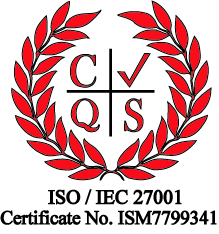As today’s rapidly evolving digital landscape becomes more complex, we need new tools to protect sensitive data and systems. In this blog post we take a closer look at Zero Trust Architecture, and how it delivers the most robust defences against the modern cyber threats facing the digital business.
What is Zero Trust Architecture ?
Traditionally, IT architecture has relied on a controlled perimeter, such as the corporate network and perimeter firewall, to define what is trusted, and what is not. However, with the advent of remote work, cloud-based services, and greater collaboration between partners, this is no longer effective.
At its core, Zero Trust Architecture is a security philosophy based on the principle of “never trust and always verify”. Zero Trust Architecture rejects the perimeter and its implicit trust between entities. Instead, it demands that the legitimacy of every communication between entities is validated by verifying their identities (“Are you who you claim to be?”) and their entitlements (“Are you permitted to ask for that?”) before requests are fulfilled.
How does Zero Trust Architecture work?
Zero Trust Architecture requires that entities prove their identities to other entities by securely authenticating themselves. For an end user, this might be a strong password. Increasingly, end user authentication requires multifactor authentication (simply, the use of two credentials rather than one), because passwords can be guessed or stolen.
Then, the authenticated entity must demonstrate that their request is legitimate by proving they are entitled to make it. This process is called authorisation. By requiring other entities to authenticate and authorise their requests, each entity can trust that these requests are legitimate and can be safely fulfilled.
What is the role of Identity and Access Management (IAM)?
Zero Trust Architecture requires the authentication and authorisation of entities across the organization’s entire digital estate. For a large organisation, this can amount to many tens of thousands of entities (employees, systems, resources, etc), which are constantly changing. An IAM solution is an essential tool that makes Zero Trust manageable by automating the provisioning and updating of credentials and entitlements through identity management. An IAM solution also performs the verification of credentials and entitlement though access management.
Conclusion
In an era where cyber threats are becoming more sophisticated and the traditional perimeter-based security model no longer suffices, Zero Trust Architecture ensures that users and devices are trusted before granting their requests are fulfilled. By embracing the “never trust, always verify” mindset and implementing robust IAM, companies can elevate their cybersecurity defences to new heights. At New Era Technology, we provide organisations with the foundations for Zero Trust through our IAM solutions.
More information
If you would like to know more about our IAM solution, Able+, please get in touch with our identity and access solution experts.

 Australia
Australia Canada
Canada LATAM
LATAM New Zealand
New Zealand UAE
UAE United States
United States




